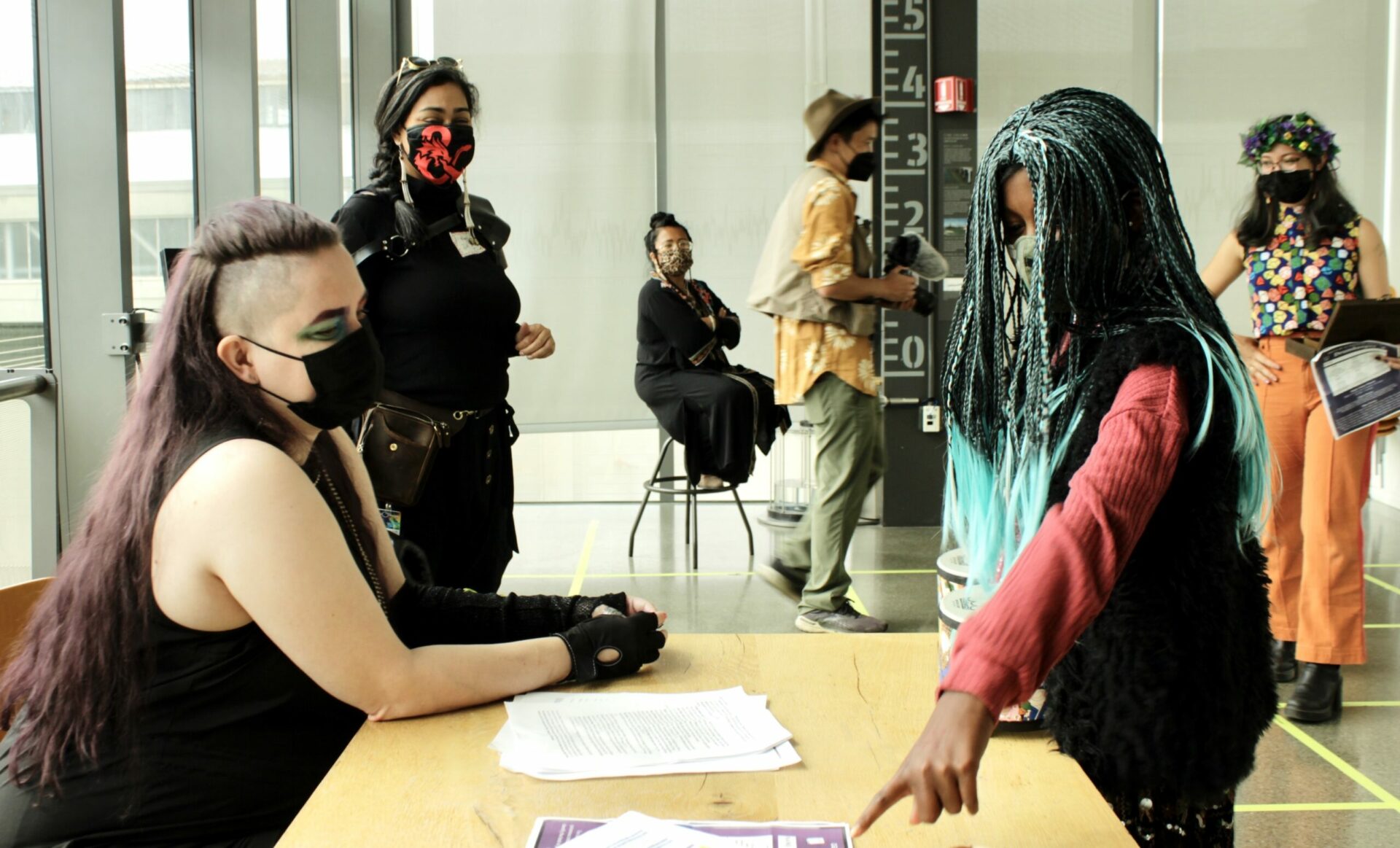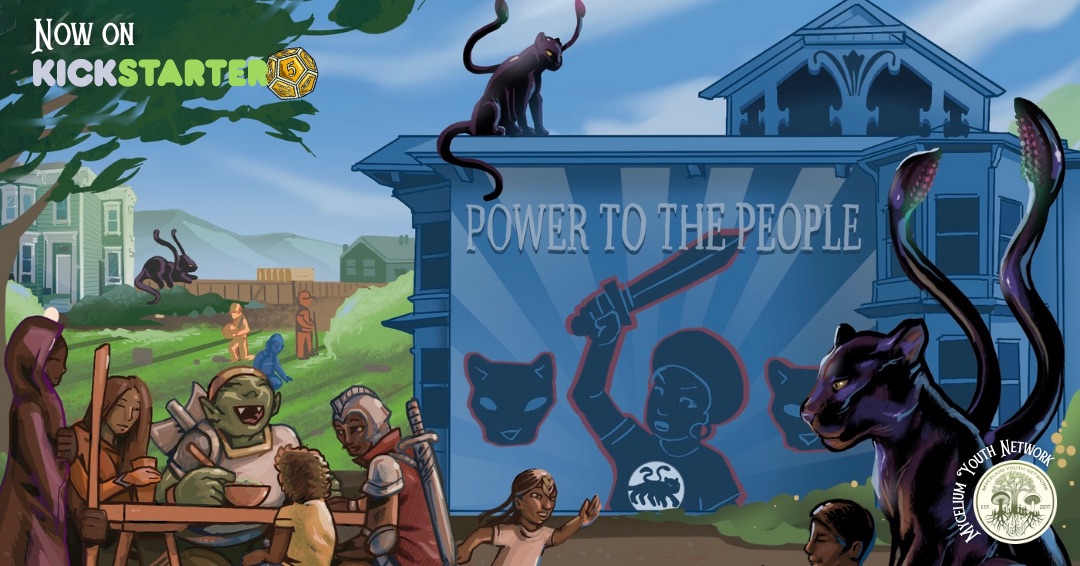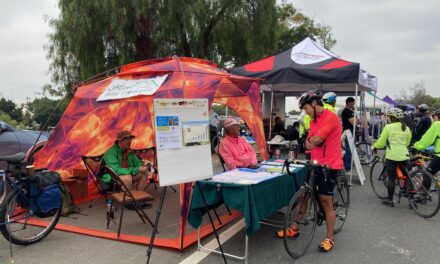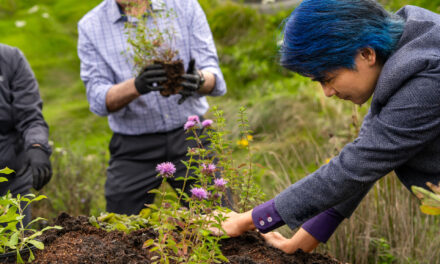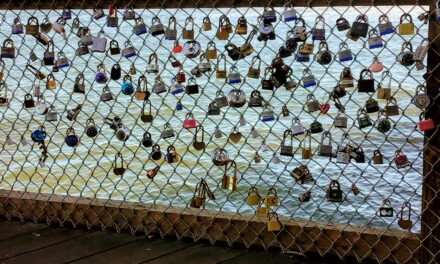Imagining a More Climate-Just World
You’re playing a game where mythical creatures have suddenly emerged from the earth, running loose and causing chaos in your local neighborhood. It isn’t possible to put the magical beings back into the ground — so your job is to figure out how to keep everyone safe by transforming the pandemonium into something positive.
Now, consider this: what if these “creatures” were actually fossil fuels that have been extracted? Now that they’ve been released into the atmosphere, is it possible to dream of real, positive solutions to reduce the damage?
This creative query stems from just one of ten environmental justice adventures in the The Mycelium Youth Universe Gaming for Justice Compendium. This collection of Dungeons & Dragons Style games is the latest brainchild to come from Mycelium Youth Network and is meant to encourage young players to approach climate and social change with an uninhibited imagination.
“We’re imagining a future that is more positive where we can build together — create space and time to dream together — the kind of world we want to see and adventure into,” says lead storyteller Marcy Brown.
While the games in the compendium are inspired by the landscape of the San Francisco Bay Area, they actually take place in a magical realist world called the Mycelium Universe, aka the Myc-U—or as Brown says, the “theater of the mind.”
Within this fictional universe, the adventures explore different social justice and environmental movements ranging from the 1800s all the way to the future, ultimately combining real historical issues with a fantastical element.
Art depicting a climate-just imaginary world. Art: Mycelium.
Whether it’s air pollution, rising sea levels, or gentrification, problems that exist within Myc-U are also real world problems. (A game played at the Exploratorium in August 2022 focused on clean air in a port city like Oakland.) But unlike the real world, this imagined world knows no bounds, giving players more creative freedom to uncover answers to the most pressing social and climate issues.
Brown says that by allowing players to approach intense climate justice topics through something as fun and light-hearted as a game, not only is creativity awakened, but a sense of hope is injected back into the climate movement.
“It’s an intentional space to create joy where there’s emotional catharsis, where [players] can speak more easily about how they’re feeling,” says Brown.
This imaginative space, says Brown, has allowed young players to flourish. Not only have students shown expressiveness and engagement while playing the games, but she has also witnessed the building of several skills, like collaboration, confidence, and empathy.
These essential skills, combined with historical knowledge and a limitless imagination, are the perfect recipe for players and people to collectively dream up and build a more climate-just world.
For Brown, this is perhaps the most important objective of the games: “We want to create a solution together.”
Other Recent Posts
Slow Progress on Shade For California’s Hottest Desert Towns
Coachella Valley communities face record temperatures with little shade. Policy changes lag as local groups push for heat equity.
In Uncertain Times, the Port of Oakland Goes Electric
A $322M grant powers Oakland’s port electrification — cleaning air, cutting emissions, and investing in community justice.
Testing Adaptation Limits: Mariposa Trails, Marin Roads & San Francisco Greenspace
In KneeDeep’s new column, The Practice, we daylight how designers, engineers and planners are helping communities adapt to a changing climate.
ReaderBoard
Once a month we share reader announcements: jobs, events, reports, and more.
Boxes of Mud Could Tell a Hopeful Sediment Story
Scientists are testing whether dredged sediment placed in nearby shallows can help our wetlands keep pace with rising seas. Tiny tracers may reveal the answer.
“I Invite Everyone To Be a Scientist”
Plant tissue culture can help endangered species adapt to climate change. Amateur plant biologist Jasmine Neal’s community lab could make this tech more accessible.
How To Explain Extreme Weather Without the Fear Factor
Fear-based messaging about extreme weather can backfire. Here are some simple metaphors to explain climate change.
Live Near a Tiny Library? Join Our Citizen Marketing Campaign
KneeDeep asks readers to place paper zines in tiny street libraries to help us reach new folks.
Join KneeDeep Times for Lightning Talks with 8 Local Reporters at SF Climate Week
Lightning Talks with 8 Reporters for SF Climate Week
Staying Wise About Fire – 5 Years Post-CZU
As insurance companies pull out and wildfire seasons intensify, Santa Cruz County residents navigate the complexities of staying fire-ready.






